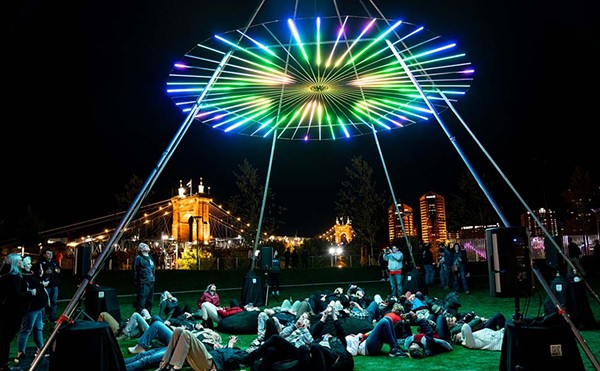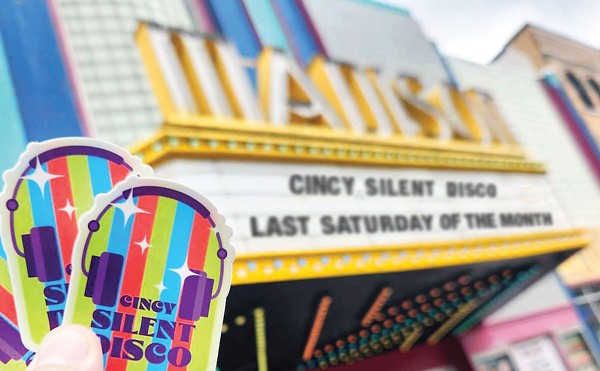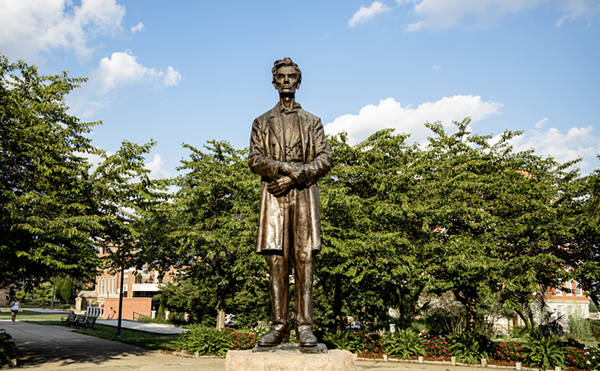Where to Find Glendale’s Famous Black Squirrels and Painted Squirrel Statues
By CityBeat Staff on Wed, Sep 29, 2021 at 11:16 am
Stroll through the Cincinnati suburb of Glendale, and you might notice its rambunctious mascot scurrying up trees or across lawns. And we’re not talking about a human in a costume; the black squirrel, a color morph of the species Sciurus carolinensis, aka the eastern gray squirrel, is a unique inhabitant of the village.
As the legend goes, businessman Thomas Carruthers III brought back two black squirrels from Harbor Springs, Michigan in the 1940s. The population grew in the following decades, says glendaleohioarchive.org.
And to pay tribute to this local quirk, 5-foot-tall fiberglass squirrel statues dot Glendale’s streets and yards. Twenty-five squirrel statues were revealed in 2005 as part of the village’s sesquicentennial celebration. Of those, 13 can still be viewed today; the others have been moved to private property or were sold.
Glendale is a 22-minute drive north of downtown Cincinnati, making squirrel-statue hunting the perfect afternoon romp. Need a guide? Glendale’s website has a map pinpointing the remaining statues and the various routes you can take to see them.
Decorated by local artists and placed outside businesses and community spaces, the statues depict everything from an apron-wearing, rolling-pin-wielding squirrel outside of Bluebird Bakery to “Scrappy Fritz Kloth,” a fire-fighter squirrel guarding the fire station.
Some squirrels have been repainted since their initial installation. For example, once covered in sports balls, the squirrel on the upstairs deck of The Cock & Bull Pub now appears as a British Beefeater. And outside of Glendale Family Chiropractic, formerly the Wolff Vision Center, the squirrel has ditched its glasses to become a skeleton, making it the spookiest critter of all.
Read a full feature about Glendale's famous black squirrels and find a map to the statue locations at CityBeat.com.
Photos by Mackenzie Manley
Scroll down to view images
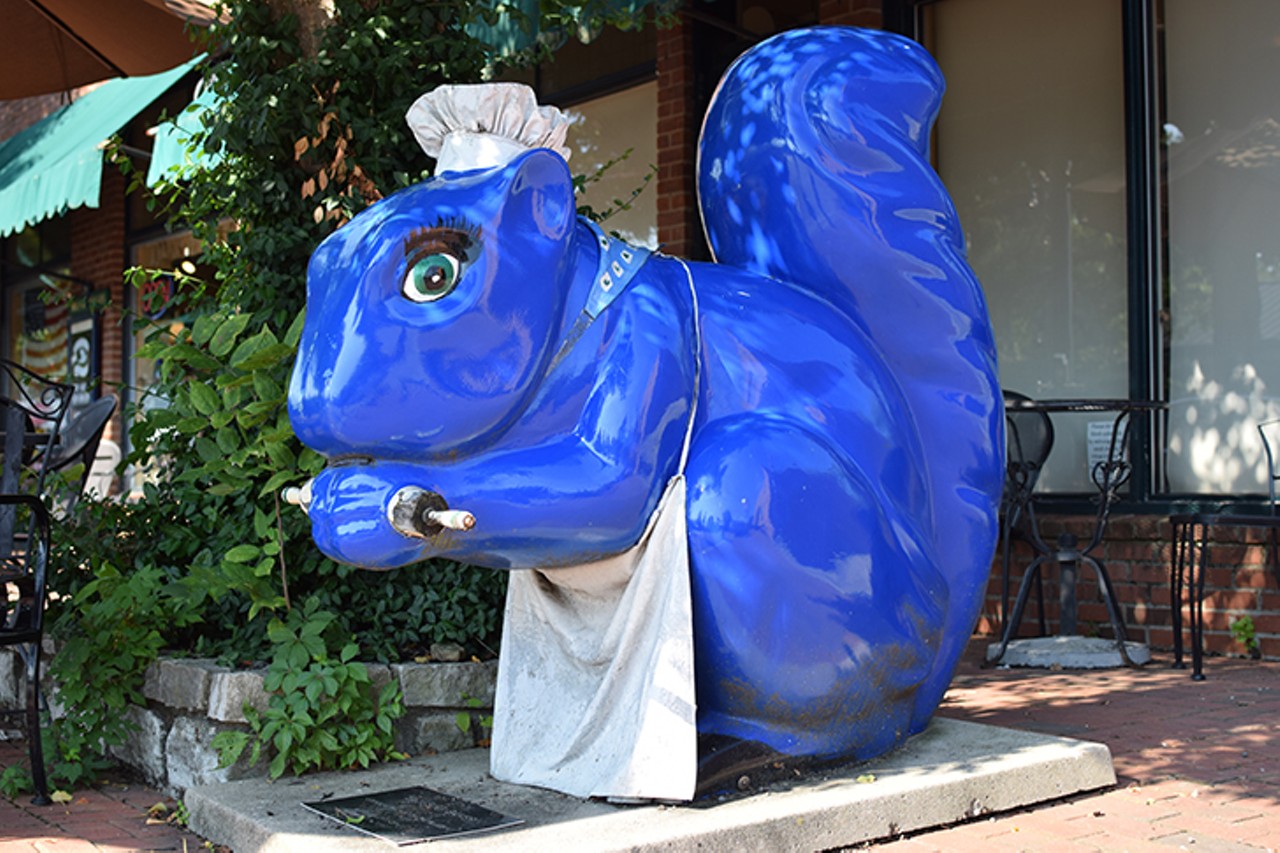
Mackenzie Manley
"Bluebird Bakery" is located outside the Bluebird Bakery on Glendale's Village Square.
1 of 13
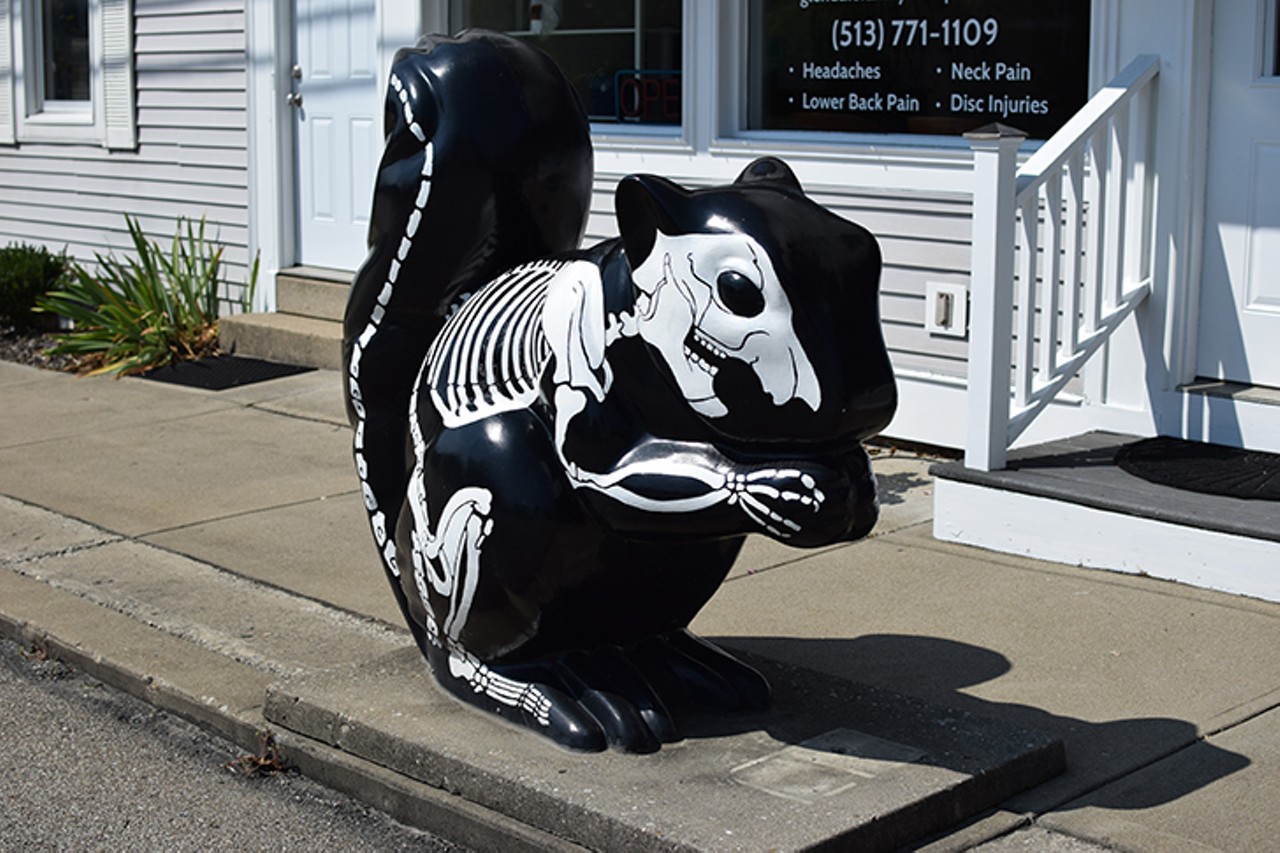
Mackenzie Manley
Formerly known as "I.C.Clearlynow," this skeletal squirrel has been repainted and positioned next to Glendale Family Chiropractic at Congress and Washington avenues.
2 of 13
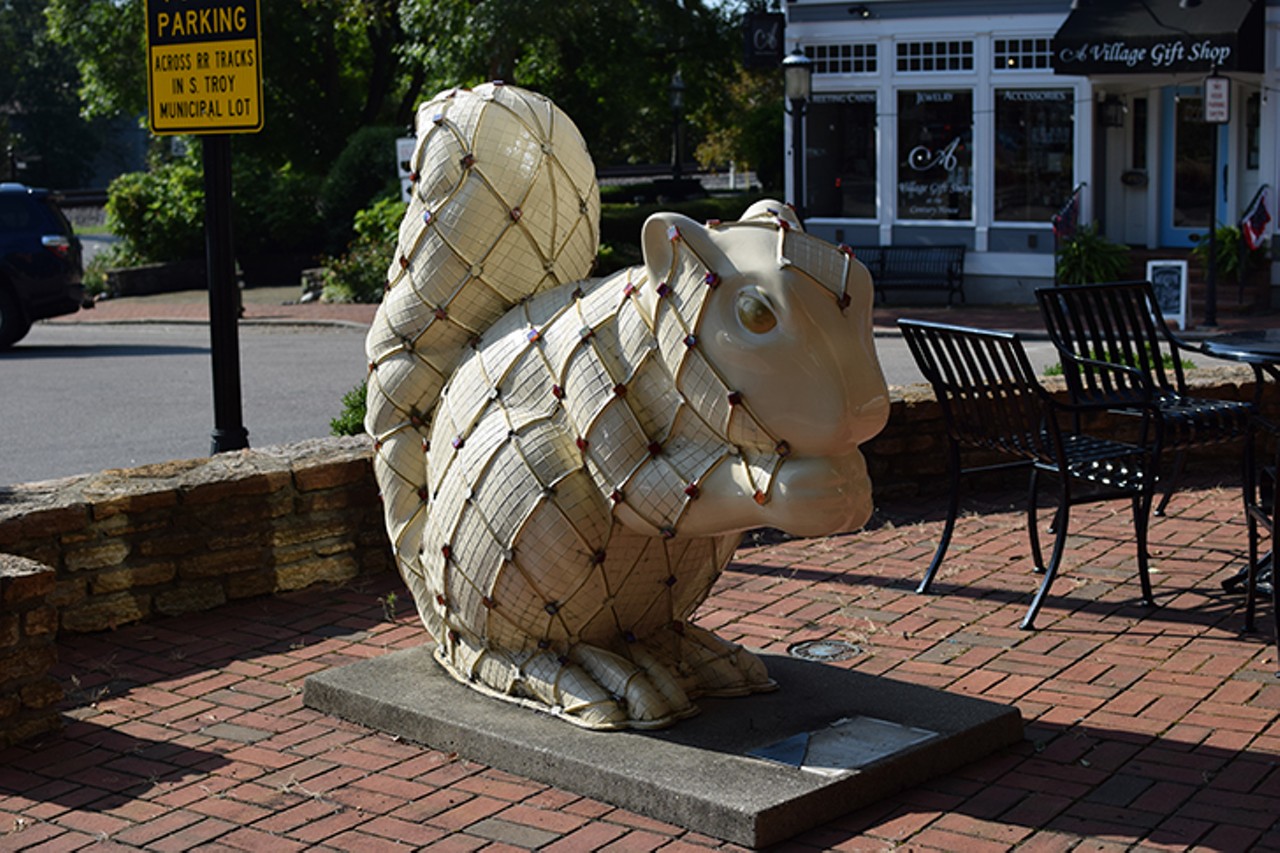
Mackenzie Manley
"Faberge Fosdick" was once located outside of Smith Jewelers but is now on the southwest corner of Village Square.
3 of 13
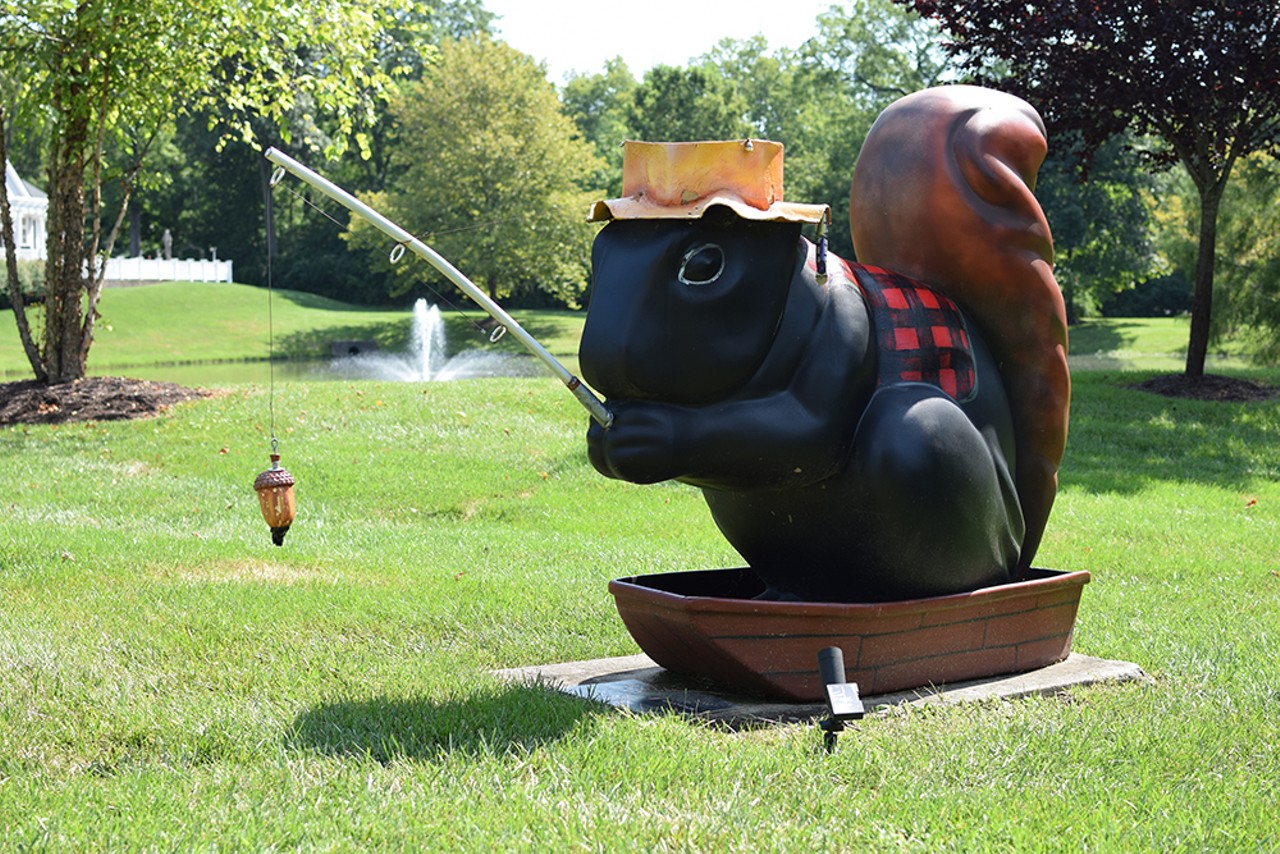
Mackenzie Manley
"Fosdick at the Pond" is fishing at Carruthers Pond Drive.
4 of 13
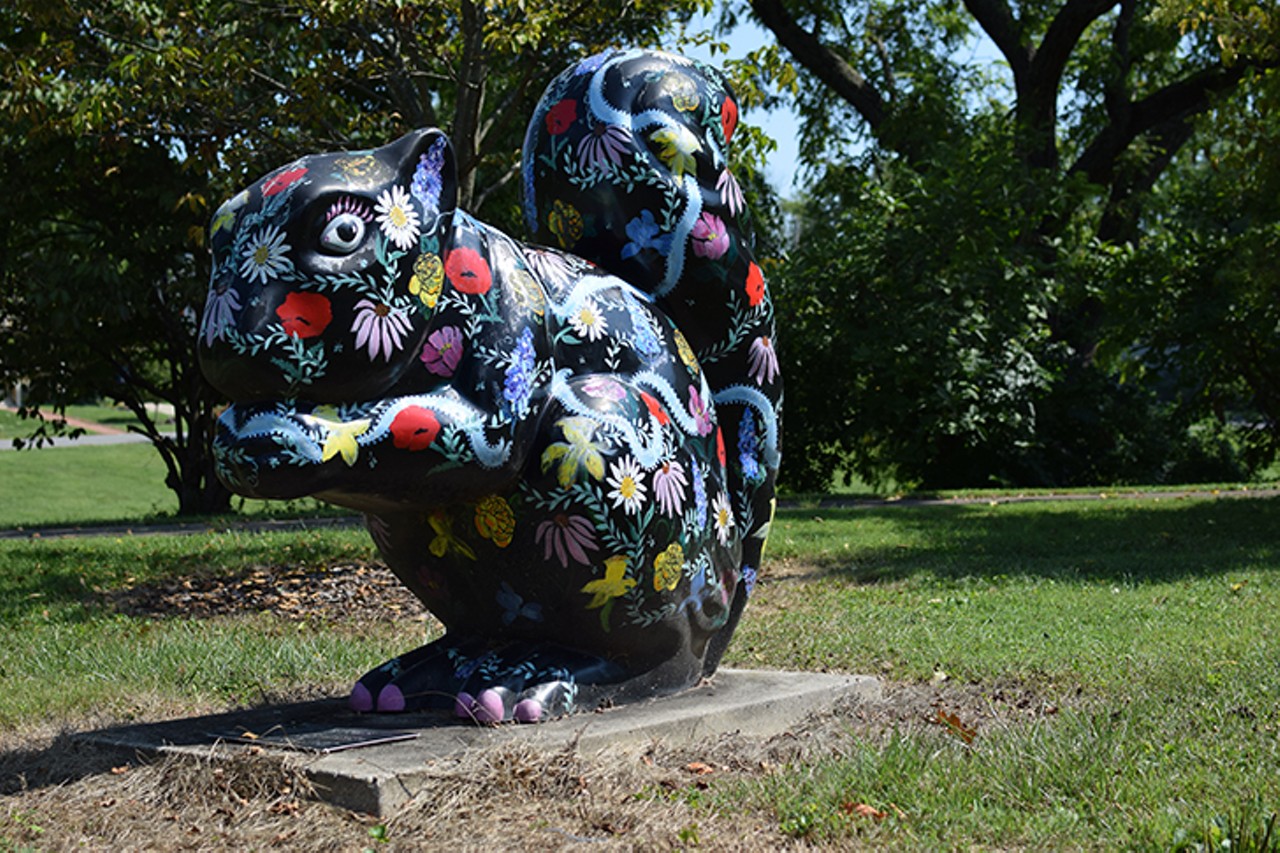
Mackenzie Manley
"Flower Power" squirrel sits on Congress Avenue at Carruthers Park.
5 of 13
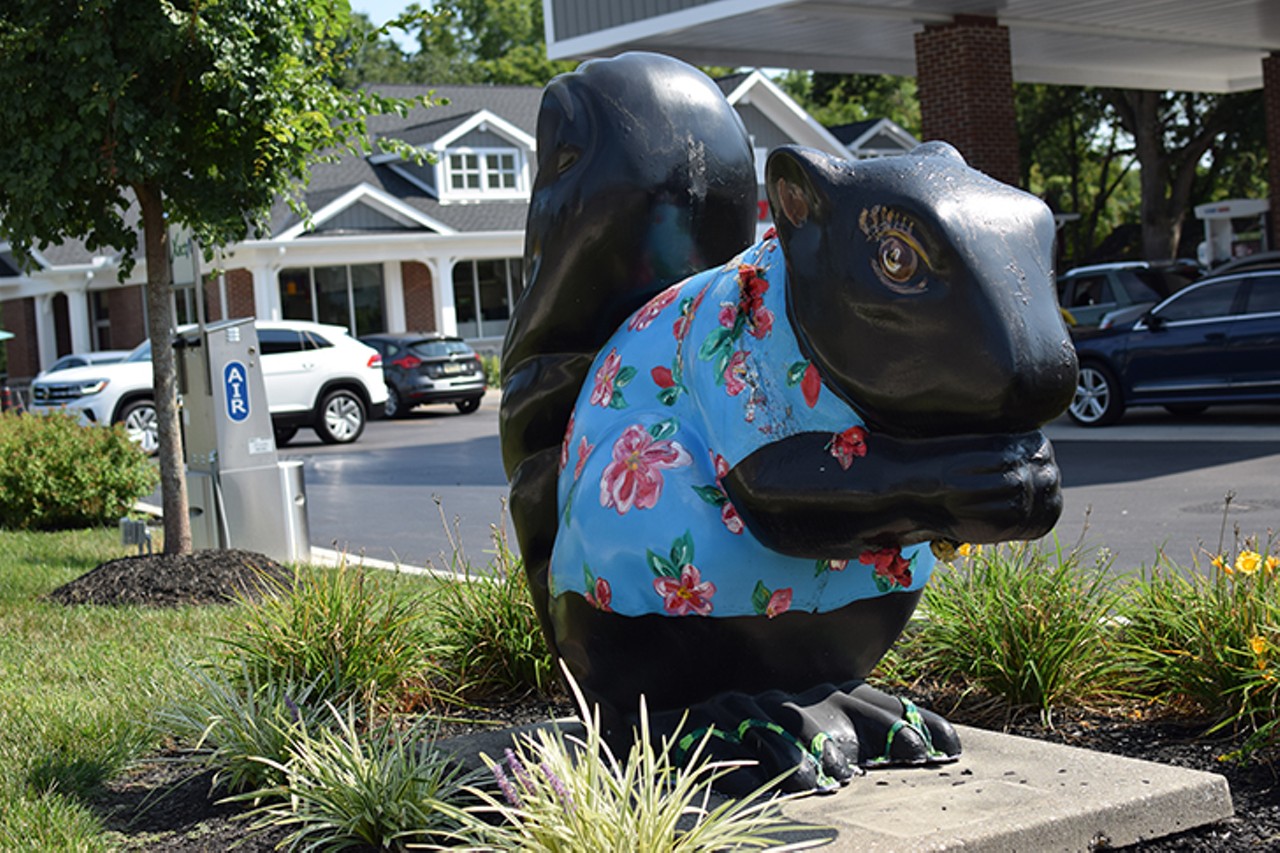
Mackenzie Manley
The "Retire in Style" squirrel hangs outside of UDF on Sharon Avenue.
6 of 13
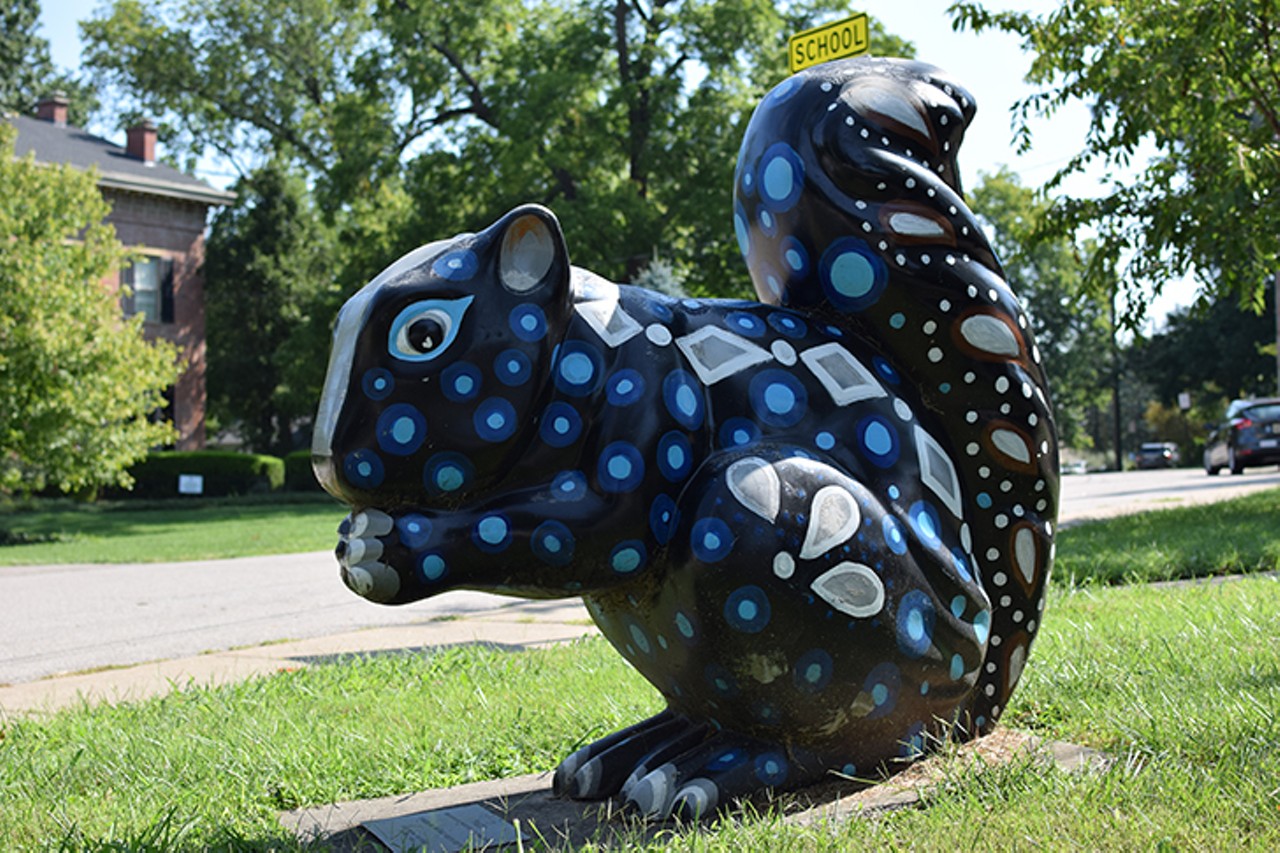
Mackenzie Manley
"Paco" got a new color scheme and can be found on Congress Avenue, outside Glendale Elementary School.
7 of 13
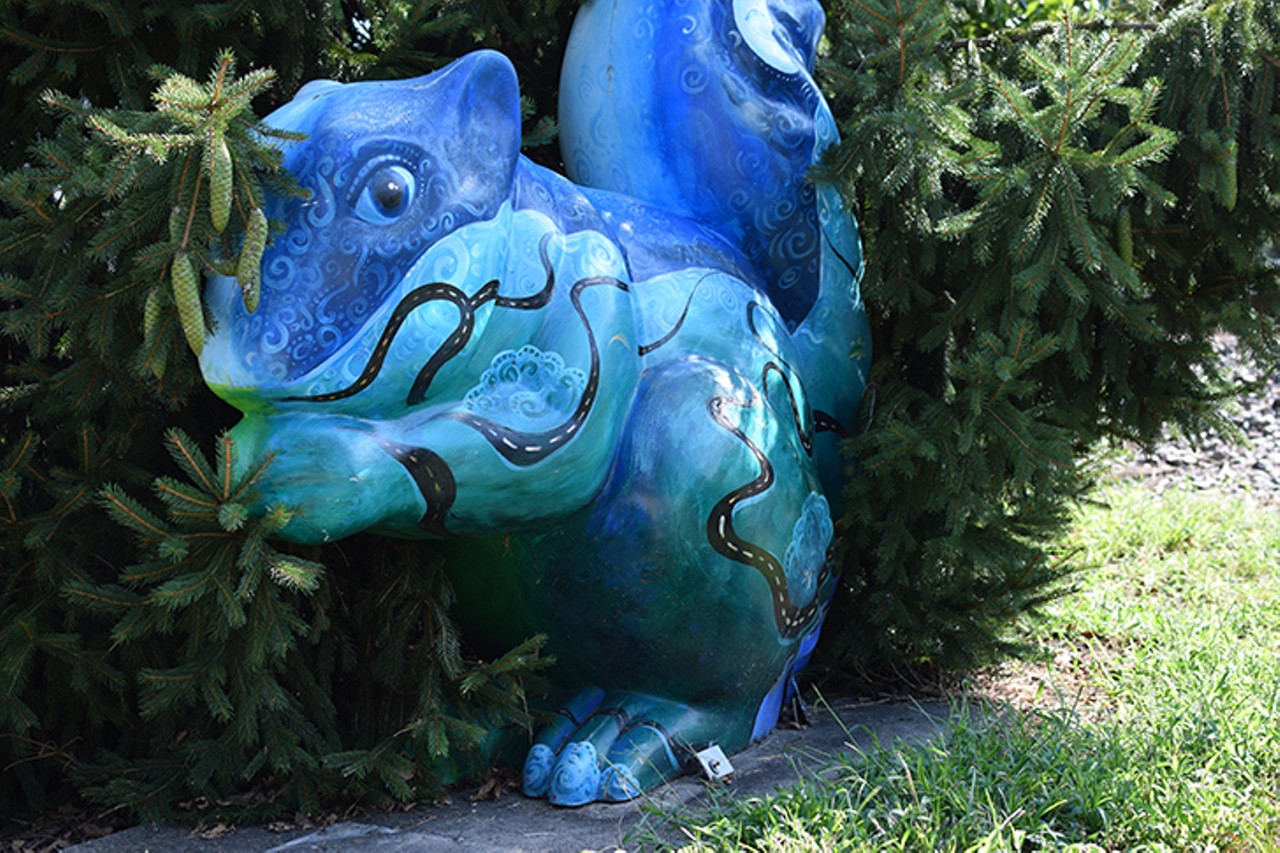
Mackenzie Manley
"Open Road" squirrel has been lightly repainted and sits at Greenville and Fountain avenues.
8 of 13
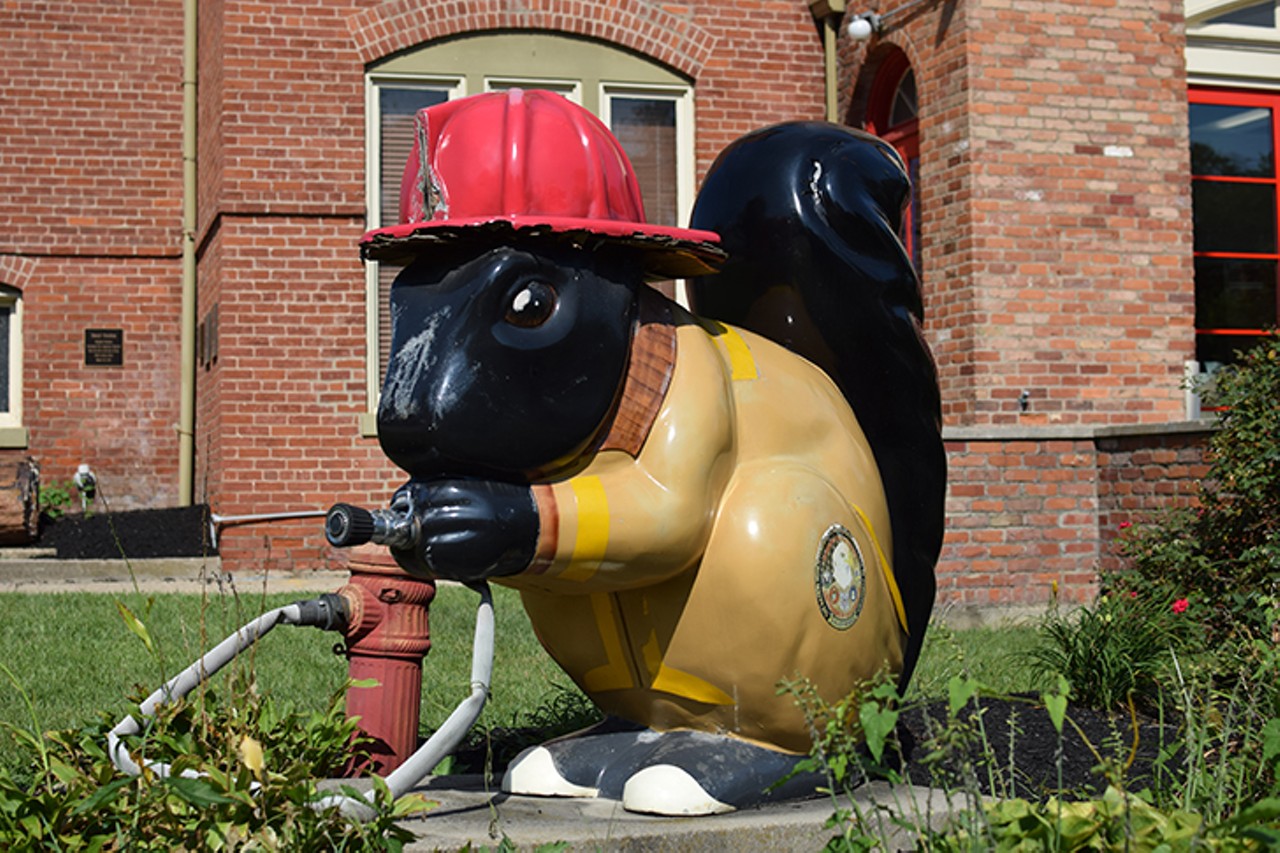
Mackenzie Manley
"Scrappy Fritz Kloth" the firefighter stands sentry outside Town Hall on Sharon Avenue.
9 of 13
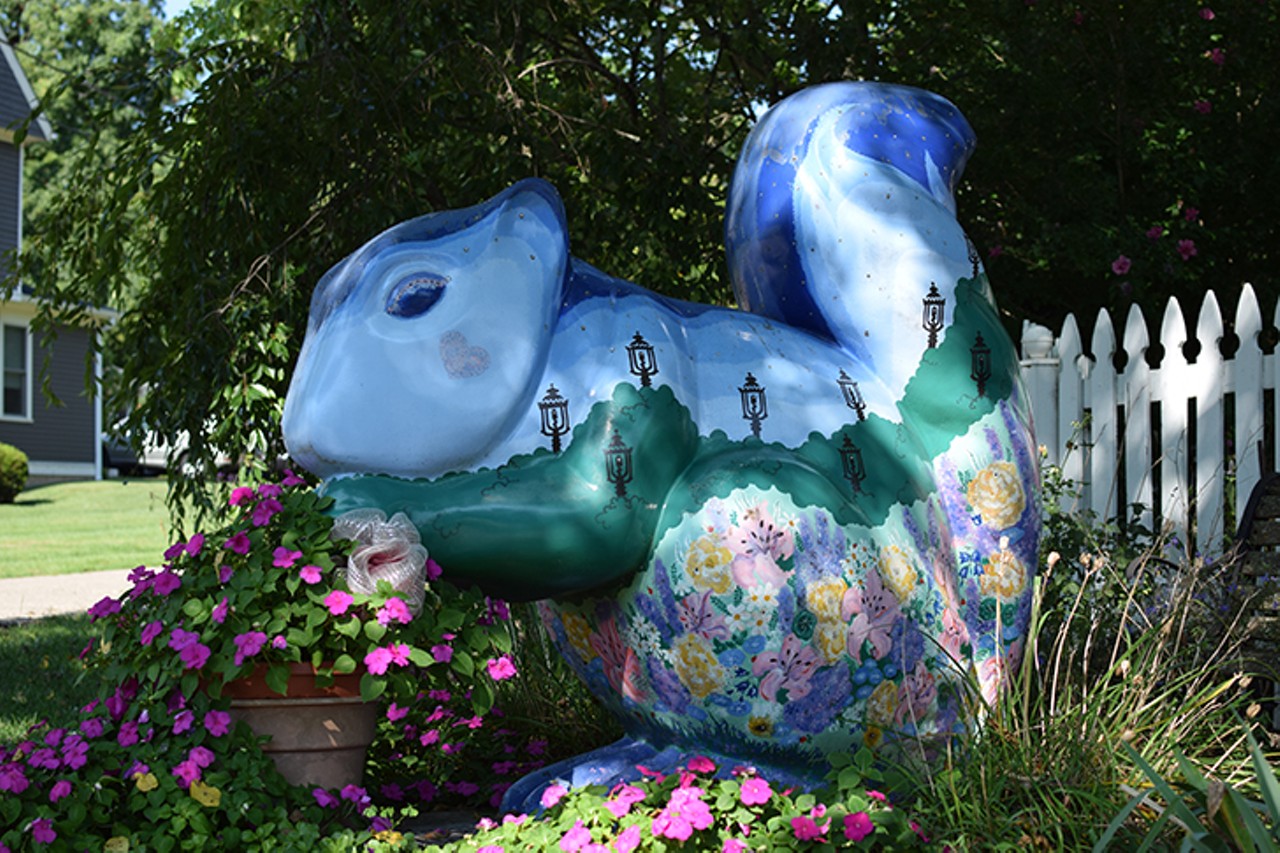
Mackenzie Manley
"Twinkleberry Glentale" is at Greenville and Elk avenues.
10 of 13
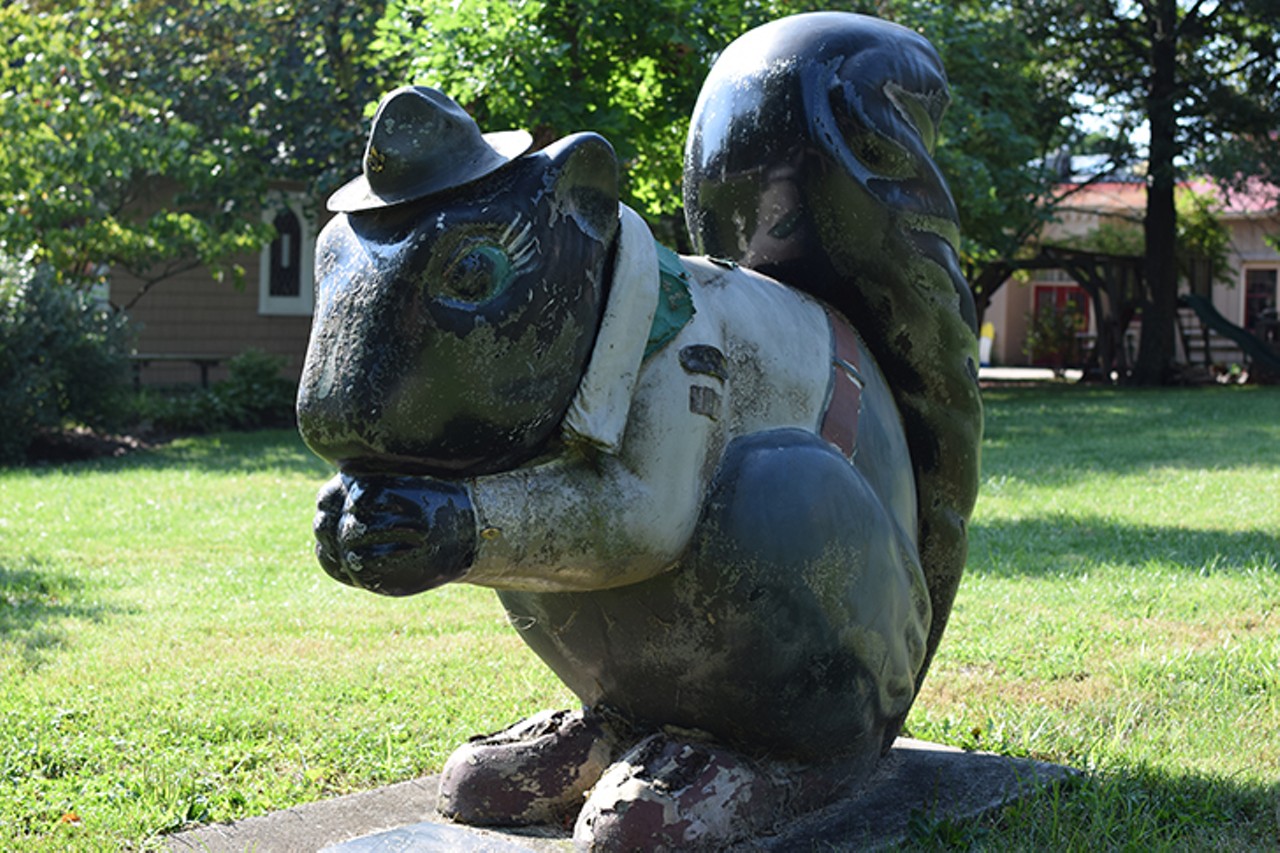
Mackenzie Manley
Find "Scout Fosdick" perched on the Harry Whiting Brown Community Center lawn, opposite the Scout House.
11 of 13
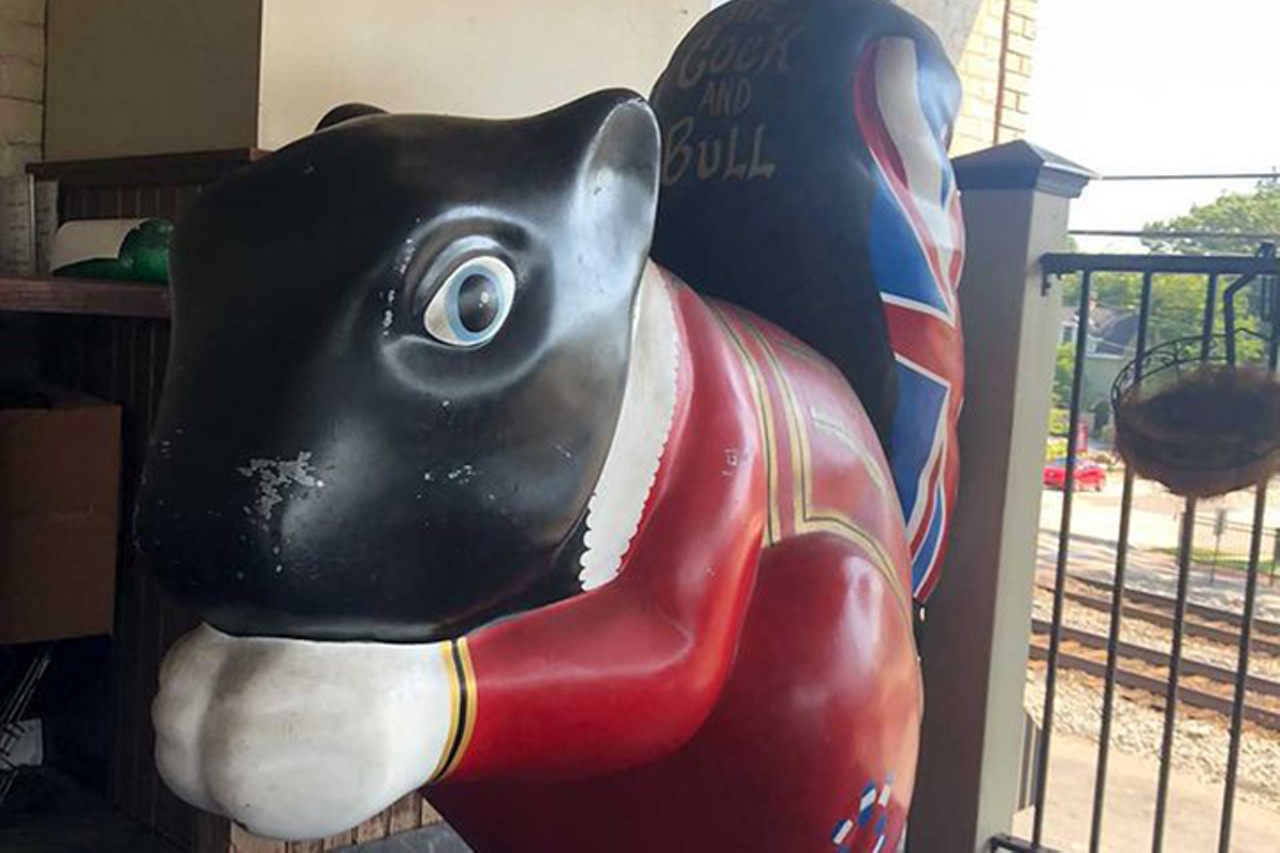
Mackenzie Manley
"The Beefeater," formerly known as "Sport!," has been repainted and is located on the upstairs deck of the Cock & Bull Public House.
12 of 13
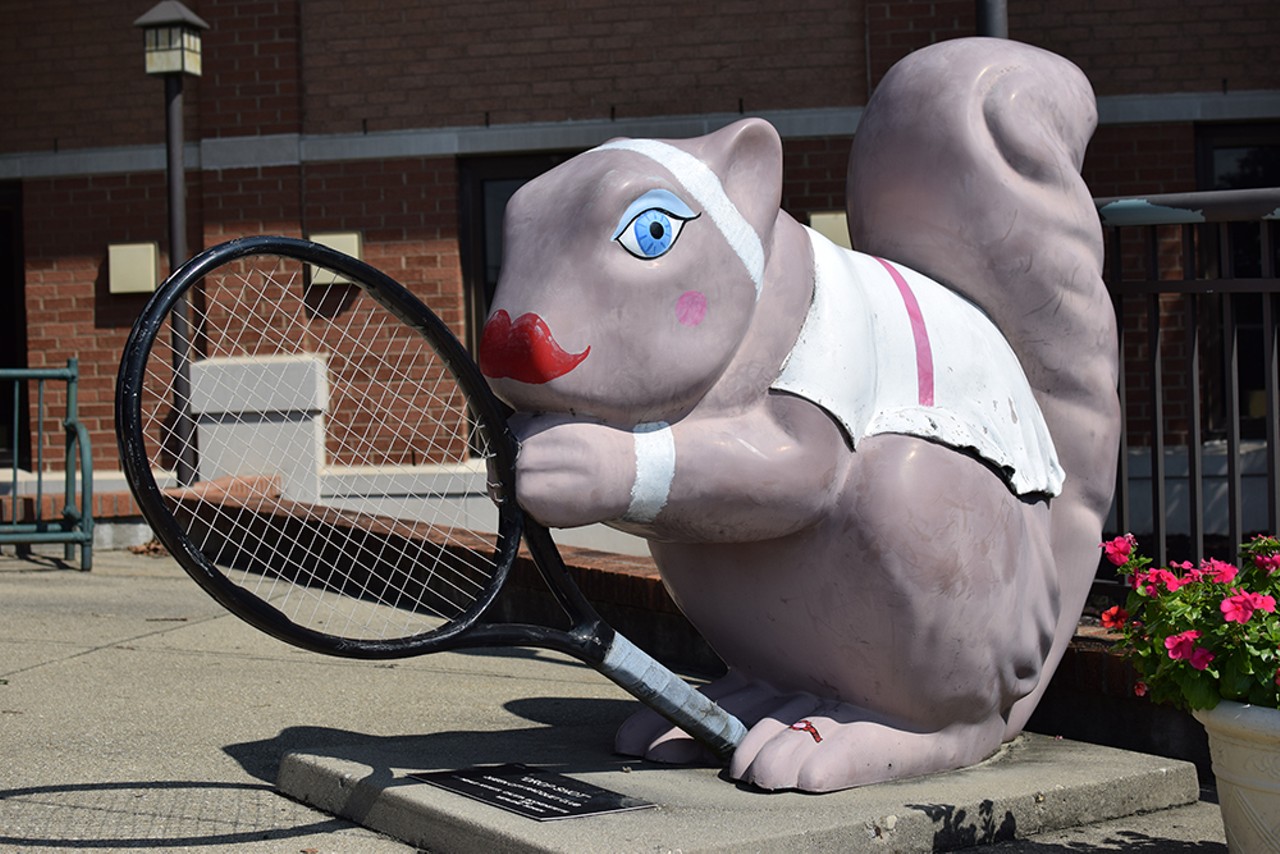
Mackenzie Manley
The sporty "Drop Shot" squirrel is ready to play outside the Queen City Racquet Club on Chester Road.
13 of 13
Related Slideshows
- Local Cincinnati
- News & Opinion
- Arts & Culture
- Things to Do
- Food & Drink
- Music
- Cincinnati in Pictures
- About City Beat
- About Us
- Advertise
- Contact Us
- Work Here
- Big Lou Holdings, LLC
- Cincinnati CityBeat
- Detroit Metro Times
- Louisville LEO Weekly
- St. Louis Riverfront Times
- Sauce Magazine





